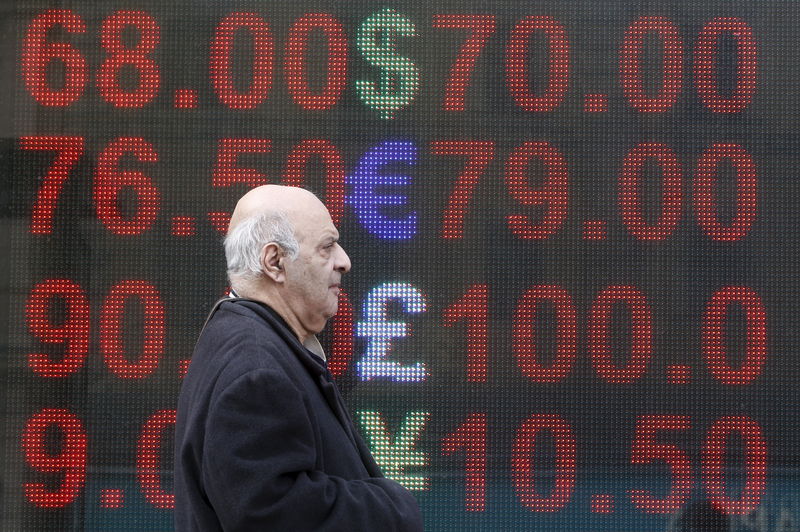Investing.com - The yen rose on Wednesday as a drop in oil prices soured market sentiment, while the euro was flat ahead of the upcoming European Central Bank meeting on Thursday.
USD/JPY slid 0.2% to 108.98, but held above Monday’s one-week lows of 107.82.
Oil prices fell sharply on Wednesday as a three day strike by Kuwaiti workers ended.
The end of the strike saw concerns about a global supply overhang return to the forefront, pressuring global stocks lower.
Steep falls in oil prices have hit investor confidence and look likely to continue to weigh on risk appetite.
Fears over an intervention by Japanese officials to weaken the yen kept investors cautious on the currency.
Bank of Japan Governor Haruhiko Kuroda reiterated Wednesday that it is prepared to ease monetary policy further in order to reach its inflation target.
The euro was little changed against the dollar and the yen, with EUR/USD at 1.1364 and EUR/JPY easing to 123.9.
Investors were looking ahead to the ECB meeting on Thursday, at which no policy changes were expected.
The ECB unveiled a raft of new measures in March, including interest rate cuts, additional monthly bond purchases and more cheap loans to banks, but the euro rallied after ECB head Mario Draghi indicated that there would be no further rate cuts.
The oil-linked Canadian dollar turned lower, with USD/CAD last at 1.2677, off Tuesday’s lows of 1.2629, lows last seen in July.
The New Zealand dollar was also lower, with NZD/USD down 0.53% at 0.7007.
The Australian dollar remained close to 10-month highs, with AUD/USD at 0.7815.
The high-yielding Aussie has been boosted by the view that the Federal Reserve will stick to a cautious approach on future interest rate hikes and by the adoption of negative interest rates in Europe and Japan.
Meanwhile, the pound was flat, with GBP/USD at 1.4390 after data showing that the number of people out of work rose for the first time in seven months in the December to February quarter.
Wage growth also slowed, indicating the Bank of England will be in no rush to raise interest rates.
The U.S. dollar index, which measures the greenback’s strength against a trade-weighted basket of six major currencies, was steady at 94.02.
